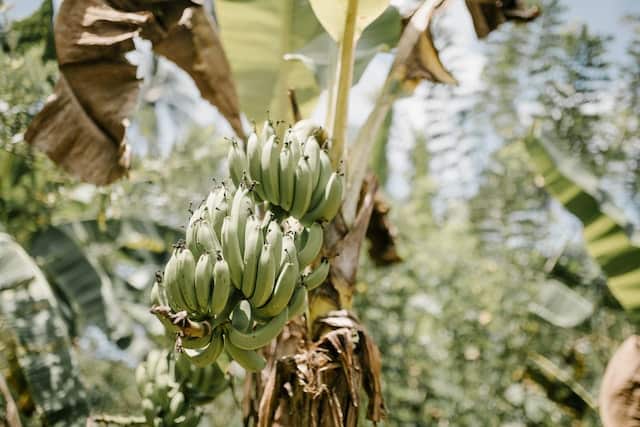Banana plants are a popular choice for gardeners and plant enthusiasts alike. These tropical plants are known for their large, lush leaves and delicious fruit. However, banana plants are not without their challenges. One of the most common issues that plant owners face is a banana plant dying.
There are many reasons why a banana plant may begin to die. Nutrient deficiencies, fungal infections, and improper watering are just a few of the factors that can contribute to a dying banana plant. Understanding the common causes of banana plant death and how to address them can help ensure that your plant thrives.
Key Takeaways:
- Banana plants are a popular choice for gardeners, but they can be prone to dying due to a variety of factors.
- Understanding the common causes of banana plant death, such as nutrient deficiencies and fungal infections, is important for plant owners.
- Proper watering, nutrient management, and addressing root rot are all important steps for reviving a dying banana plant.
Check out these other top posts:
Understanding Banana Plants

Banana plants (Musa spp.) are tropical plants that are native to Southeast Asia. They are grown for their fruit, which is a staple food in many tropical regions of the world. Banana plants are classified as herbaceous perennials, which means they have a non-woody stem and can live for several years.
Banana plants are typically grown in the tropics, where the climate is warm and humid. They require a lot of water and nutrients to grow and produce fruit. In the United States, banana plants can only be grown in USDA hardiness zones 9-11, which are located in the southern part of the country.
Banana plants are not actually trees, but rather a type of herb. They can grow up to 30 feet tall and have large, paddle-shaped leaves that can be up to 9 feet long and 2 feet wide. The leaves are arranged in a spiral pattern around the stem, and they can be green, red, or purple.
Banana plants are also known as tropical plants and fruit trees. They are susceptible to a variety of pests and diseases, including Panama disease, which is a fungal infection that can cause the plant to wilt and die. To prevent the spread of disease, it is important to practice good sanitation and avoid planting banana plants in the same location for more than two years in a row.
Common Diseases and Pests
Banana plants are susceptible to a variety of diseases and pests that can cause them to die. Here are some of the most common ones:
1. Fusarium Wilt
Fusarium wilt is a fungal infection that affects the vascular system of the banana plant. It causes the leaves to turn yellow and wilt, and eventually the plant dies. This disease is caused by the fungus Fusarium oxysporum f. sp. cubense, and there are several strains of the fungus, including Tropical Race 4, which is the most devastating.
2. Black Sigatoka
Black Sigatoka is a fungal disease that affects the leaves of the banana plant. It causes the leaves to turn black and die, which can lead to a decrease in fruit production. This disease is caused by the fungus Mycosphaerella fijiensis, and it is spread by wind and rain.
3. Panama Disease
Panama disease is a fungal infection that affects the roots of the banana plant. It causes the plant to wilt and eventually die. This disease is caused by the fungus Fusarium oxysporum f. sp. cubense, and it is spread through contaminated soil, water, and equipment.
4. Aphids
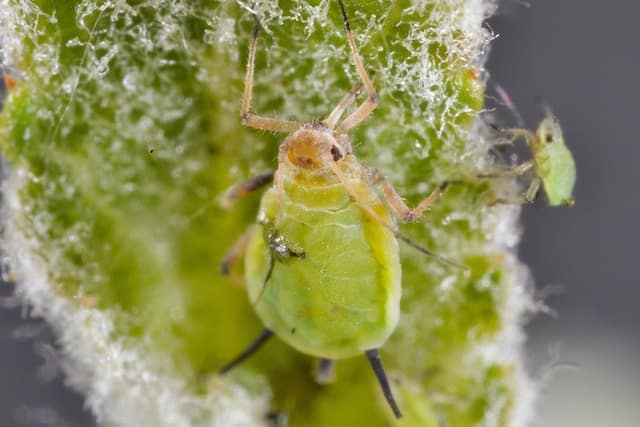
Aphids are small insects that feed on the sap of the banana plant. They can cause the leaves to curl and distort, and they can also transmit viruses and other diseases. Aphids are usually controlled with insecticides or by introducing natural predators, such as ladybugs or lacewings.
5. Other Pests and Diseases
Other pests and diseases that can affect banana plants include banana weevils, nematodes, bacterial wilt, and anthracnose. These can be controlled with proper sanitation practices, such as removing infected plants and debris, and by using insecticides and fungicides when necessary.
Symptoms of Banana Plant Dying
It can be difficult to tell if a banana plant is dying or not, but generally, if it has any of the below symptoms, it’s likely declining in health.
1. Yellow Leaves
Yellow leaves are a common symptom of a dying banana plant. If the leaves are turning yellow from the tips down, it could be a sign of overwatering. If the leaves are turning yellow from the base up, it could be a sign of underwatering. In some cases, yellow leaves could also be a sign of a fungal infection or nutrient deficiency.
2. Brown Leaves
Brown leaves are another common symptom of a dying banana plant. If the leaves are turning brown and crispy, it could be a sign of underwatering or low humidity. If the leaves are turning brown and mushy, it could be a sign of overwatering or a fungal infection.
3. Dropping Leaves
Dropping leaves are a sign that the banana plant is stressed and may be dying. If the plant is dropping leaves from the bottom up, it could be a sign of underwatering or nutrient deficiency. If the plant is dropping leaves from the top down, it could be a sign of overwatering or a fungal infection.
4. Droopy Leaves
Droopy leaves are another sign of a dying banana plant. If the leaves are drooping and wilted, it could be a sign of underwatering or low humidity. If the leaves are drooping and mushy, it could be a sign of overwatering or a fungal infection.
5. Improper Watering
Improper watering is one of the most common causes of a dying banana plant. Overwatering can lead to root rot, while underwatering can cause the plant to wilt and die. It’s important to water the banana plant when the top inch of soil is dry and to ensure that the soil has good drainage..
Watering and Nutrient Requirements
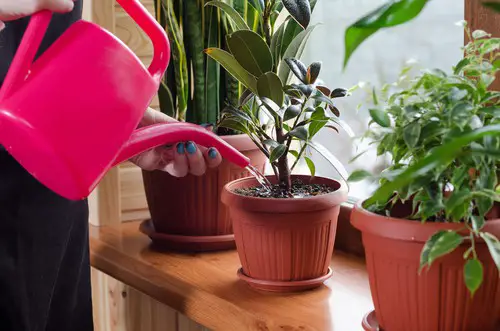
Banana plants require a consistent and adequate supply of water and nutrients to grow and thrive. Proper watering and fertilization are essential to prevent the plant from dying.
Watering
Over-watering or under-watering banana plants can lead to a host of problems, including stunted growth, yellowing or drooping leaves, and root rot. Banana plants prefer well-draining soil and should only be watered when the top 2-4 inches of soil are dry. To check soil moisture, push a finger into the soil. If it feels dry, it’s time to water.
When watering, apply enough water to moisten the soil to a depth of 6-8 inches. Avoid getting water on the leaves, as this can lead to fungal diseases. It’s also important to water deeply and infrequently rather than shallowly and frequently. This encourages the plant’s roots to grow deep into the soil, which helps to anchor the plant and access nutrients.
Nutrient Requirements
Banana plants require a balanced supply of nutrients to grow and produce fruit. The most important nutrients for banana plants are nitrogen, phosphorus, and potassium. Nitrogen is essential for leaf growth, while phosphorus is necessary for root development and flower production. Potassium helps to regulate water balance and improve fruit quality.
To ensure that banana plants receive the necessary nutrients, it’s important to fertilize regularly. Use a balanced fertilizer with equal parts nitrogen, phosphorus, and potassium. Apply the fertilizer every 2-3 months during the growing season, and reduce or stop fertilizing during the winter months when the plant is dormant.
It’s also important to maintain the soil pH between 5.5 and 7.0. Banana plants prefer slightly acidic soil, and a pH outside of this range can affect nutrient uptake. Use a soil test kit to monitor the pH and adjust it if necessary.
Transplanting and Repotting
Transplanting or repotting a banana plant can be a stressful process for the plant due to root disturbance. It is important to handle the plant with care and take necessary precautions to minimize the stress on the plant.
Transplanting
Transplanting a banana plant involves moving it from one location to another. This can be done if the plant has outgrown its current location or if the soil quality is poor. It is best to transplant the plant during the growing season when it is actively growing.
When transplanting, it is important to dig a hole that is twice the size of the rootball. Gently remove the plant from its current location and place it into the new hole. Fill the hole with soil and water the plant thoroughly. It is also recommended to apply a layer of mulch around the base of the plant to help retain moisture.
Repotting
Repotting a banana plant involves moving it from one pot to another. This can be done if the plant has outgrown its current pot or if the soil quality is poor. It is best to repot the plant during the growing season when it is actively growing.
When repotting, it is important to choose a pot that is slightly larger than the current pot. Gently remove the plant from its current pot and loosen any tangled roots. Place the plant into the new pot and fill it with soil. Water the plant thoroughly and apply a layer of mulch around the base of the plant.
It is important to note that repotting can cause transplant shock, which may lead to the plant’s death. To prevent this, it is recommended to avoid repotting during the winter months and to handle the plant with care. It is also important to ensure that the new pot has sufficient drainage holes to prevent waterlogging.
By following these transplanting and repotting tips, one can help minimize the stress on the banana plant and ensure its healthy growth.
Propagation and Pruning

To propagate a banana plant, one can use either suckers or stem cuttings. Suckers are small shoots that grow from the base of the plant. They can be removed from the main plant and replanted in a separate pot.
Stem cuttings can be taken from the main stem of the plant, and they should be at least 6 inches long. The cutting should be allowed to dry for a day before planting it in soil. Both methods can be successful, but suckers are generally easier to propagate.
Pruning is another important aspect of banana plant care. It is important to remove dead or damaged leaves regularly to prevent the spread of disease. Pruning can also help to promote the growth of new leaves and fruit.
When pruning, it is important to use clean, sharp tools to prevent damage to the plant. Banana plants can be pruned throughout the year, but it is best to avoid pruning during the winter months when growth is slower.
When pruning, it is important to remove the oldest leaves first. This will allow the plant to focus its energy on producing new leaves and fruit. It is also a good idea to remove any leaves that are damaged or yellowing. These leaves can attract pests and diseases, which can be harmful to the plant.
In addition to pruning, it is important to fertilize banana plants regularly. This will help to promote healthy growth and fruit production. It is best to use a balanced fertilizer that contains equal amounts of nitrogen, phosphorus, and potassium. Fertilizer should be applied every 2-3 months during the growing season.
Overall, propagation and pruning are important aspects of banana plant care. By using proper techniques, one can ensure that their banana plant remains healthy and productive.
Impact of Climate and Weather
Bananas are highly susceptible to changes in climate and weather conditions. The plant thrives in tropical regions, which are typically hot and humid. However, extreme weather events, such as droughts, floods, and storms, can have a significant impact on banana production.
Climate change is also affecting banana production, as rising temperatures and changes in rainfall patterns can lead to reduced yields and increased susceptibility to pests and diseases.
A fungal plant disease from Asia has been spreading across banana-growing areas of Latin America and the Caribbean since the 1960s. New research suggests that climate change is aiding the spread of this disease, known as Panama disease, which is threatening to wipe out the Cavendish banana, the most commonly grown banana variety.
In addition, bananas are sensitive to direct sunlight and hot and dry climates, which can cause the leaves to wilt and the fruit to ripen prematurely. Therefore, bananas are often grown under shade trees to protect them from direct sunlight and to maintain a suitable microclimate.
Temperature is also a critical factor in banana production, as the plant is sensitive to both high and low temperatures. Bananas grow best in temperatures between 20°C and 30°C, and temperatures below 15°C or above 35°C can have a negative impact on plant growth and fruit development.
Banana Varieties and Their Resistance
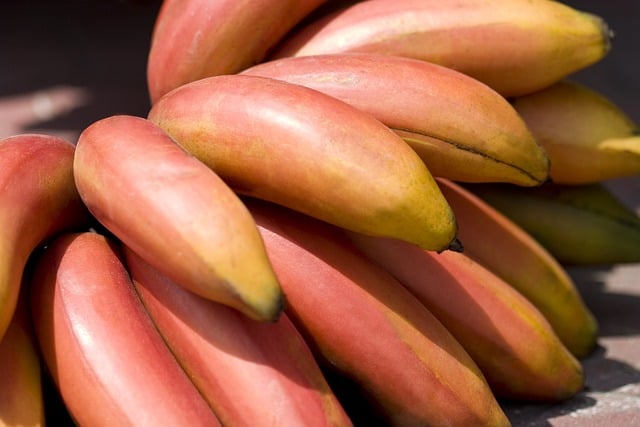
Bananas come in various varieties, and some are more resistant to diseases than others. The most popular banana variety worldwide is the Cavendish, which replaced the Gros Michel variety in the 1950s when the latter was almost completely wiped out by a fungal disease known as Panama disease.
Despite being resistant to Panama disease, the Cavendish variety is now threatened by a strain of the same fungus called Tropical Race 4 (TR4).
Apart from the Cavendish and Gros Michel varieties, there are many other banana varieties, each with its unique characteristics. For example, the Lady Finger variety is a small, sweet banana with a thin skin, while the Red banana has a reddish-purple skin and a sweet flavor.
The Blue Java variety has a unique flavor and texture, while the Burro banana is starchy and has a lemony taste.
Some banana varieties are more resistant to diseases than others. For example, the FHIA-01 and FHIA-02 varieties are resistant to Panama disease and Black Sigatoka, a fungal disease that affects banana leaves.
The Goldfinger variety is resistant to both Panama disease and Black Sigatoka, while the Pisang Awak variety is resistant to Fusarium wilt, another fungal disease that affects bananas.
In summary, while the Cavendish variety is the most popular banana variety worldwide, it is now threatened by a fungal disease called TR4. Other banana varieties, such as the FHIA-01, FHIA-02, Goldfinger, and Pisang Awak, are resistant to various banana diseases.
Therefore, it is essential to diversify banana varieties to ensure that there is always a plant resistant to any disease that may arise.
Role of Mulch and Compost
Mulch and compost play an important role in saving a dying banana plant. Mulch is a layer of organic material that is spread over the soil surface to retain moisture, suppress weeds, and regulate soil temperature.
On the other hand, compost is a mixture of decomposed organic matter that is added to the soil to improve soil structure, fertility, and water-holding capacity.
When it comes to banana plants, mulch and compost can help retain moisture in the soil, which is important for the plant’s survival. Banana plants require a lot of water, and mulch can help reduce water loss due to evaporation. Mulch can also suppress weeds, which can compete with the banana plant for water and nutrients.
Compost, on the other hand, can help improve soil fertility and structure. Banana plants require a lot of nutrients, and compost can provide these nutrients in a slow-release form. Compost can also improve soil structure, which can help improve water-holding capacity and reduce soil erosion.
When using mulch and compost for a dying banana plant, it is important to choose the right type of material. Mulch can be made from a variety of materials, including bark, straw, pine needles, and leaves. Compost can be made from a variety of organic materials, including food waste, yard waste, and manure.
It is important to ensure that the mulch and compost are well-aerated and not too compacted. This can help prevent waterlogging and root rot, which can be fatal to a banana plant. Additionally, it is important to apply mulch and compost at the right time and in the right amount. Too much mulch or compost can lead to nutrient imbalances and waterlogging.
Addressing Root Rot
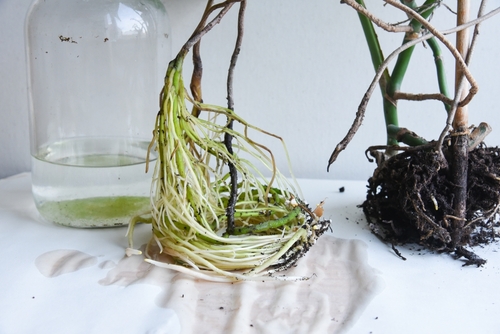
Root rot is a common issue that can cause banana plants to die. It is a fungal disease that affects the roots and causes them to decay. The fungus thrives in wet and poorly drained soil, which is why it is important to ensure that the soil is well-drained and not too moist.
To prevent root rot, it is important to avoid overwatering the plant. The soil should be moist but not waterlogged. If the soil is too wet, the roots will not be able to get enough oxygen, which will make them more susceptible to root rot. It is also important to ensure that the soil is well-draining.
If the soil is too heavy and does not drain well, it can lead to waterlogging and root rot.
If root rot is already present, it is important to take action to address it. The first step is to remove the affected parts of the plant. This may mean cutting off the leaves and stems that are affected by the disease. It is important to use clean and sterilized tools to prevent the disease from spreading to other parts of the plant.
Once the affected parts have been removed, the plant should be treated with a fungicide. There are many different types of fungicides available, so it is important to choose one that is appropriate for the type of root rot that is affecting the plant.
It is also important to follow the instructions on the fungicide carefully to ensure that it is applied correctly and at the right time.
In addition to treating the plant with a fungicide, it is also important to address any underlying issues that may have contributed to the development of root rot. This may mean improving the drainage of the soil, reducing the amount of water that the plant receives, or improving the overall health of the plant through fertilization and other measures.
Banana Plantation and Industry
Bananas are one of the most popular fruits in the world, and their cultivation has turned into a massive industry. The banana plantation industry is a significant contributor to the global economy, with exports worth billions of dollars each year.
However, the industry is facing a severe threat due to the spread of a fungal disease that is decimating banana plantations worldwide.
The banana industry relies heavily on monoculture, which means that vast areas are planted with a single variety of banana. The most popular variety is the Cavendish banana, which accounts for 99% of all banana exports. This monoculture practice makes the banana plantations vulnerable to diseases and pests, as there is no genetic diversity to protect against them.
The fungal disease, known as Panama disease or Tropical Race 4 (TR4), is the most significant threat to the banana industry. It affects the roots of the banana plant, making it impossible for the plant to absorb nutrients and water, ultimately leading to the plant’s death. The disease spreads through the soil, making it difficult to control and eradicate.
The banana industry is crucial to many countries’ economies, especially those in Central and South America, which are major banana exporters. For example, Ecuador is the world’s largest exporter of bananas, followed by the Philippines and Costa Rica.
The industry provides employment to millions of people worldwide, from plantation workers to packers and shippers.
Geographical Impact on Banana Plants
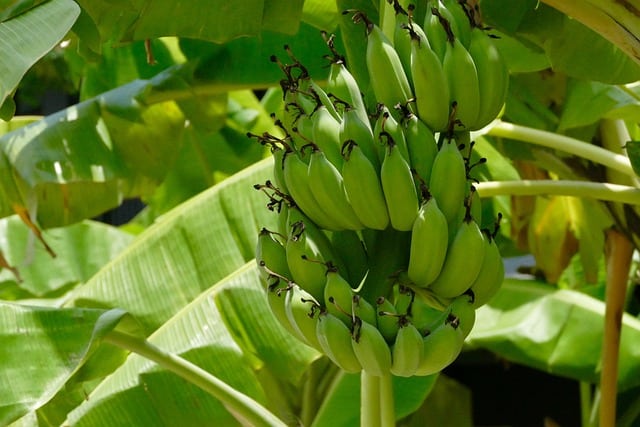
Banana plants are widely cultivated in tropical and subtropical regions of the world, including Central America, Latin America, Africa, Southeast Asia, Australia, and the Middle East. These regions have different climates, soil types, and production methods that affect banana plant growth and yield.
In Central America, the banana industry has been affected by Panama disease, which is caused by the fungus Fusarium oxysporum f. sp. cubense. This disease has devastated banana crops in the region, leading to a decline in production and exports.
Some countries, such as Costa Rica and Honduras, have shifted to other banana varieties, such as the GCTCV-218, which is resistant to Panama disease.
In the Middle East, the banana industry is facing challenges due to the hot and dry climate, which affects the growth and quality of bananas. However, some countries, such as Israel and Jordan, have developed advanced irrigation systems and greenhouse technologies that allow them to produce high-quality bananas.
In Latin America, banana cultivation is a major industry, with countries such as Ecuador, Colombia, and Brazil being major exporters. However, these countries also face challenges such as soil degradation, pests, and diseases, which affect banana plant growth and yield.
In Australia, the banana industry is concentrated in the tropical regions of Queensland, where the Cavendish variety is widely grown. However, this variety is susceptible to Panama disease, which has been detected in some plantations. To prevent the spread of the disease, strict quarantine measures have been implemented.
In Africa, banana cultivation is an important source of income and food for millions of people. However, the industry faces challenges such as low productivity, pests, and diseases. To address these challenges, some countries, such as Mozambique, have implemented programs to promote the use of disease-resistant varieties and good agricultural practices.
In Southeast Asia, banana cultivation is a major industry, with countries such as the Philippines, Indonesia, and Thailand being major exporters.
However, the industry is threatened by diseases such as Panama disease and Banana bunchy top virus, which affect banana plant growth and yield. To address these challenges, some countries have implemented measures such as quarantine, disease surveillance, and the use of disease-resistant varieties.
Reviving a Dying Banana Plant
When a banana plant starts to show signs of dying, it can be a cause for concern for any gardener. However, there are a few steps that can be taken to revive a dying banana plant.
1. Identify the Possible Issues
The first step in reviving a dying banana plant is to identify the possible issues. Banana plants are susceptible to a range of problems, including overwatering, underwatering, pests, and diseases. By identifying the issue, the gardener can take the necessary steps to address the problem and revive the plant.
2. Adjust Watering Habits
One of the most common issues with a dying banana plant is incorrect watering. Overwatering can lead to root rot, while underwatering can cause the leaves to wilt and turn brown.
The gardener should adjust their watering habits to ensure that the plant is receiving the correct amount of water. The top 2 inches of soil should be allowed to dry out before watering again. If the soil is too dry, the gardener can increase the frequency of watering.
3. Improve Soil Quality
The soil quality can also affect the health of a banana plant. The soil should be well-draining and rich in nutrients. If the soil is too compacted, the gardener can add some organic matter, such as compost or manure, to improve the soil quality. Additionally, the gardener can use a slow-release fertilizer to provide the plant with the necessary nutrients.
4. Control Pests and Diseases
Pests and diseases can also cause a banana plant to die. The gardener should regularly inspect the plant for any signs of pests or diseases, such as yellowing leaves or spots on the leaves. If pests or diseases are detected, the gardener can use an appropriate pesticide or fungicide to control the problem.in.
Indoor Banana Plants

Indoor banana plants are a great way to add a tropical touch to your home decor. However, they can be challenging to care for, and one of the most common issues is that they start to die. Here are some tips on how to keep your indoor banana plants healthy and thriving.
1. Light
Indoor banana plants need bright, indirect light to grow well. They should be placed near a window that gets plenty of sunlight but not direct sunlight. If the plant isn’t getting enough light, its leaves will start to turn yellow and it will stop growing.
2. Water
Over-watering is a common cause of indoor banana plant death. The soil should be moist but not waterlogged. Make sure the pot has good drainage and don’t let the plant sit in water. If the leaves start to turn yellow or brown and the soil is wet, the plant is probably over-watered.
3. Humidity
Indoor banana plants need high humidity to thrive. They are tropical plants, so they are used to a humid environment. You can increase the humidity by misting the leaves with water, placing a humidifier near the plant, or placing a tray of water near the plant. If the air is too dry, the leaves will start to turn brown and curl up.
4. Temperature
Indoor banana plants prefer warm temperatures between 68 and 82 degrees Fahrenheit. They don’t like cold drafts or sudden temperature changes. If the plant is exposed to cold temperatures, its leaves will start to turn brown and it will stop growing.
5. Soil
Indoor banana plants need well-draining soil that is rich in organic matter. They don’t like heavy, clay soils. You can use a commercial potting mix or make your own by mixing equal parts of peat moss, perlite, and vermiculite.
6. Fertilizer
Indoor banana plants need regular fertilization to grow well. You should fertilize them every two weeks during the growing season (spring and summer) and once a month during the dormant season (fall and winter). Use a balanced fertilizer that is high in potassium, which is essential for fruit development.
Scientific Research and Developments
Scientists around the world are working to combat the epidemic of Fusarium oxysporum cubense, a fungus that causes Fusarium wilt and is threatening the banana plant.
The fungus has already devastated global banana production, and the current strain, known as TR4, is extremely virulent towards many banana cultivars, including the Cavendish cultivars grown in large-scale monoculture plantations for export markets.
To combat this threat, biotechnological interventions are being developed and researched. One of the most promising approaches is genetic engineering, which involves modifying the plant’s genome to make it resistant to the fungus. Scientists are using techniques such as CRISPR-Cas9 to edit the genes of the banana plant and make it resistant to the fungus.
In addition to genetic engineering, other biotechnological interventions are being studied, such as using endophytic bacteria and fungi to protect the banana plant from the fungus. These microorganisms live inside the plant and can help it resist disease.
Researchers are also studying the use of natural products, such as plant extracts and essential oils, to control the fungus. These products have shown promising results in laboratory studies and may be an effective alternative to chemical fungicides.
Overall, the scientific community is working hard to find solutions to the threat of Fusarium wilt and the TR4 strain. While there is still much research to be done, these developments provide hope for the future of the banana plant.
Cultivars and Clones
Bananas are propagated through vegetative propagation, which means that new plants are grown from existing ones rather than from seeds. This method of reproduction results in genetically identical plants, known as clones. The most commonly grown banana cultivar in the world is the Cavendish, which is a clone of the Dwarf Cavendish cultivar.
While clones have the advantage of producing consistent fruit, they also have a significant disadvantage. Since all plants in a clone are genetically identical, they are all susceptible to the same diseases and pests.
This means that if a disease or pest affects one plant in a clone, it can quickly spread to all the other plants in the clone, wiping out entire plantations.
There are over 1,000 different banana cultivars, each with its own unique characteristics, such as flavor, texture, and color. However, only a few cultivars are commercially grown due to factors such as disease resistance, yield, and market demand.
The widespread use of clones in commercial banana production has led to concerns about genetic diversity and the potential for disease outbreaks. Researchers are working to develop new cultivars that are resistant to diseases and pests, while also maintaining the desirable traits of existing cultivars.
In addition to developing new cultivars, researchers are also exploring methods of genetic modification to improve disease resistance and other traits. However, there are concerns about the safety and environmental impact of genetically modified bananas, and their use in commercial production remains controversial.
Importance of Bananas in Global Calorie Intake
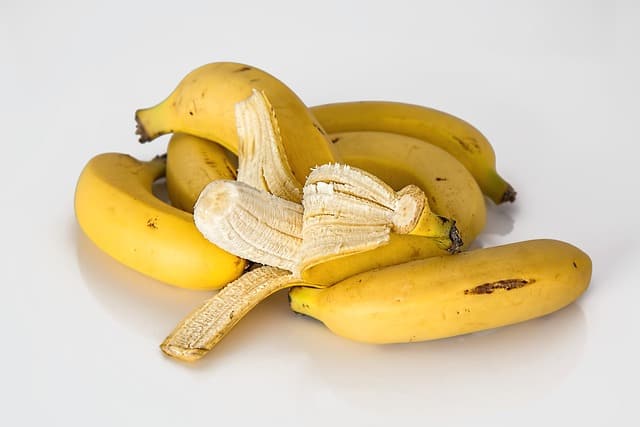
Bananas are one of the most important crops in the world, providing vital nutrition to millions of people. According to the Food and Agriculture Organization (FAO), bananas are the fourth most important food crop in the world after rice, wheat, and maize.
Bananas are a crucial source of calories for many people, particularly in developing countries where they are a staple food.
Bananas are also an important source of income for millions of small-scale farmers in developing countries, where they are often the only cash crop available. In fact, bananas are the most exported fruit in the world, with the majority of exports coming from Latin America and the Caribbean.
In terms of calorie intake, bananas play a significant role in many people’s diets. According to the FAO, bananas provide an average of 140 calories per fruit. In some countries, bananas can provide up to 25% of people’s average daily calorie intake. This is particularly true in rural parts of Uganda, Rwanda, and Cameroon, where bananas are a staple food.
Furthermore, bananas are an important source of vitamins and minerals, including vitamin C, vitamin B6, and potassium. They are also relatively low in fat and sodium, making them a healthy addition to any diet.
The importance of bananas in global calorie intake cannot be overstated. They are a vital source of nutrition for millions of people, particularly in developing countries where they are a staple food.
Additionally, they provide income and livelihoods for millions of small-scale farmers around the world. The decline in global banana production due to diseases such as Panama disease and Tropical Race 4 is therefore a cause for concern, as it could have serious implications for both global nutrition and small-scale farmers’ livelihoods.
Frequently Asked Questions
How do I know if my banana plant is dying?
A dying banana plant may have yellowing leaves, brown spots, or drooping leaves. The leaves may also turn brown and dry out. If the plant has not been watered properly, the leaves may also wilt.
What are common reasons for a banana plant to die?
Common reasons for a banana plant to die include overwatering, underwatering, lack of nutrients, pests, and diseases. Banana plants require a lot of water, but too much water can lead to root rot and eventually kill the plant.
On the other hand, underwatering can cause the leaves to dry out and the plant to die. Lack of nutrients can also cause the plant to die, as well as pests and diseases.
How can I save my banana plant from dying?
To save a dying banana plant, identify the possible issues first. Common issues include overwatering, underwatering, lack of nutrients, pests, and diseases.
Once the issue has been identified, take the necessary steps to correct it. This may involve adjusting watering habits, adding fertilizer, treating pests, or pruning diseased leaves.
What are the signs of an overwatered banana plant?
Signs of an overwatered banana plant include yellowing leaves, brown spots, and drooping leaves. The leaves may also turn brown and dry out. Overwatering can lead to root rot and eventually kill the plant.
How do I revive a dying banana plant?
To revive a dying banana plant, first identify the possible issues. This may involve adjusting watering habits, adding fertilizer, treating pests, or pruning diseased leaves. If the plant is severely damaged, it may be necessary to cut back the entire plant and start fresh.
What should I do if my banana plant’s leaves are turning brown on the edges?
If a banana plant’s leaves are turning brown on the edges, it may be a sign of underwatering or lack of nutrients. Adjust watering habits and add fertilizer to correct the issue. If the issue persists, it may be a sign of a more serious problem, such as pests or diseases.

Hey, I’m Lisa and I’ve been an avid gardener for over 30 years. I love writing, talking and living in the garden! Feel free to connect with me on my socials below

